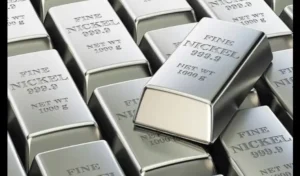MAJOR CHARACTERISTICS
Aviation Turbine Fuel (ATF)
ATF, also known as jet fuel, powers jet and turbo-prop engined aircraft. It is a specialized petroleum-based fuel consisting of a blend of hydrocarbons with additives like antioxidants, metal deactivators, anti-static agents, and corrosion inhibitors.
Classification
In crude oil refining, ATF falls under the middle-distillate category alongside diesel and kerosene. It’s essentially a highly refined grade of kerosene.
Grades
- Jet A-1 and Jet A: Primary grades used in civil commercial aviation, meeting internationally standardized specifications. Jet A-1 is used globally except in the United States, where Jet A is predominant. The main difference lies in their freeze points (-47ºC for Jet A-1 and -40ºC for Jet A).
- Jet B: Utilized for enhanced cold-weather performance due to its composition in the naphtha-kerosene region.
Other Aviation Fuels
- Military Jet Fuels: Such as JP-4, JP-5, and JP-8, also kerosene-based, primarily used in military aviation.
- Aviation Gasoline: Used in spark-ignition aviation engines.
GLOBAL SCENARIO
Production and Consumption
- In 2007, global aviation fuel production constituted 6.3% of total refinery products.
- Daily global consumption of jet fuel in 2007 was approximately 5.1 million barrels, with the U.S. consuming an estimated 1.63 million barrels per day.
Growth Trends
- Asia-Pacific: Exhibiting significant growth, with the number of travelers surpassing North America in 2009 and expected to increase further by 2013.
Refining Capacities
- Top Refiners: The U.S. leads with 20% of the world’s refining capacity, followed by China, the Former Soviet Union, Japan, and India.
WORLD KEROSENE MARKETS
- Exchanges: Tokyo Commodity Exchange (TOCOM) and C-COM.
GLOBAL OIL SCENARIO
- Oil Consumption: Oil constitutes 40% of the world’s total energy demand, with daily consumption reaching about 76 million barrels.
- Top Consumers: United States, China, and Japan are the top consumers.
INDIAN SCENARIO
ATF Production and Consumption
- India’s rising economy, middle-class incomes, and private aviation industry have led to increased domestic consumption and exports of ATF.
- ATF production in 2008-09 was 59.2 million barrels, with consumption at 32.6 million barrels, up 58% from 2004-05.
Market Dynamics
- Price Volatility: ATF prices are strongly correlated with crude oil prices, affecting domestic prices as well due to dynamic revisions by domestic refiners.
MARKET INFLUENCING FACTORS
Crude Oil Prices
- Correlation: ATF prices are highly correlated with crude oil prices due to its derivation from crude oil distillation.
Aviation Industry Demand
- Growth Drivers: Factors such as air traffic growth (passengers/cargo), global economic conditions, industrial production, trade, and aircraft fuel efficiency impact demand from the aviation sector.
Production Disruptions
- Impact: Extreme weather events or unforeseen disruptions in production can lead to price fluctuations in the market.
MEASUREMENT
- 1 US barrel = 42 US gallons.
- 1 US barrel = 158.98 litres.
- 1 MT = 7.33 barrels
- Note: barrels per tonne vary from origin to origin.





















+ There are no comments
Add yours